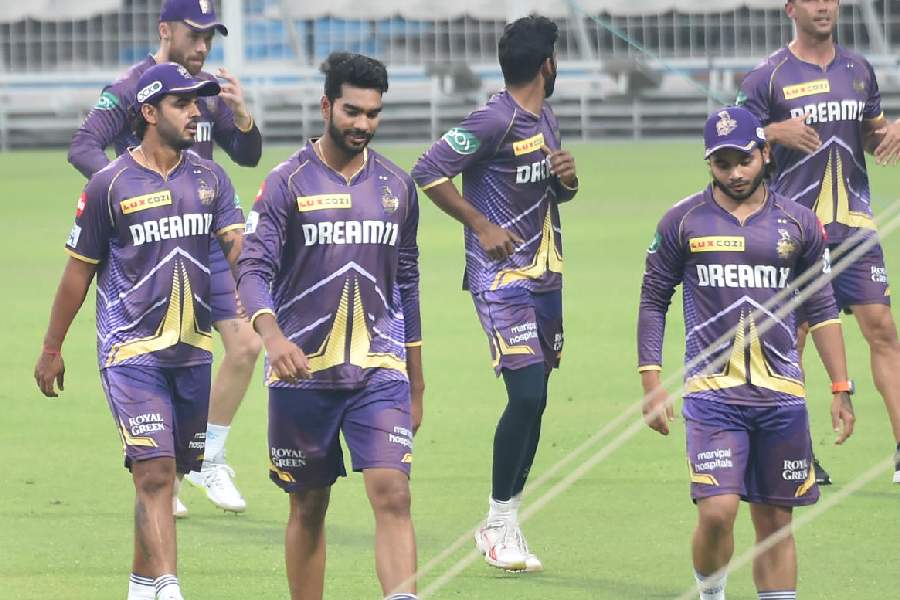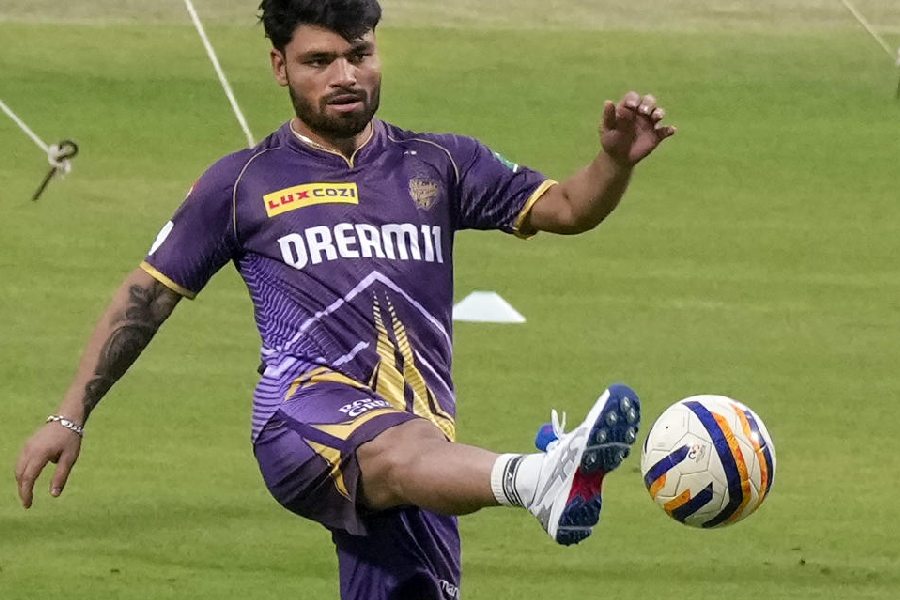On a muggy May afternoon in the IPL last year, a packed Eden Gardens awash with Kolkata Knight Riders’ purple, veteran Yuzvendra Chahal and Trent Boult cut the home team to size with sensational spells.
The match hung in the balance as Rajasthan Royals needed 150 for victory. It was assumed that the Royals would take a cautious approach on a tricky surface after losing Jos Buttler for nought in the second over.
Instead, the crowd got a glimpse into the future when a 21-year-old with school-boyish looks provided uninterrupted entertainment with a barrage of fours and sixes. The target was done and dusted in 13.1 overs leaving the KKR camp stunned in disbelief.
Yashasvi Jaiswal had stamped his class with another glorious innings — a 98 not out off 47 balls. A few matches earlier, the opener had announced his arrival by displaying his full range with a 62-ball 124 against Mumbai Indians at the Wankhede. Never troubled by sheer pace, he even dismissed Jofra Archer’s 150kmph missiles out of the park.

Venkatesh Iyer (second from left) during KKR's training session at Eden Gardens on Friday. Santosh Ghosh
IPL has pitchforked several such youngsters into the mainstream of international cricket. The list seems endless and includes the likes of Jasprit Bumrah, Hardik Pandya, Mohammed Siraj and Shubman Gill.
No wonder the money-spinning league remains the most desirable among cricket’s elite.
Last season’s grandeur included Rinku Singh’s five sixes off the last five balls, successful 200-plus chases and two teams defending sub-130 totals before a thrilling end to the final well past midnight. The spectacle will only keep growing.
The yardstick for the IPL’s success in the last 16 years could be gauged from the fact that the tournament’s valuation jumped about 28 per cent to reach $10.7 billion in 2023 against $8.4 billion in 2022. The total brand value has surged by 433 per cent since the IPL’s inception in 2008, the world’s leading brand valuation consultancy, Brand Finance said.
Mumbai Indians maintains its position at the top among the franchises in terms of brand value, coming in at $87 million, followed by Chennai Super Kings ($81 million). KKR and Royal Challengers Bangalore follow at $78.6 million and $69.8 million, respectively.
It is reflected in the IPL media rights for the 2023-27 cycle. At Rs 48,390 crore, the IPL is now the second-most valued sporting event, right after the National Football League in the US and has recorded a three-fold increase from what The Walt Disney-Star had paid at Rs 16,347 crore in 2017.
But how much has the IPL contributed to India’s ascendancy in world cricket? Does it remain the template for unearthing talent at the grassroots level? Can it be compared to the several football leagues around the world which remain the supply chain for national teams?
Success in IPL does provide instant stardom, and it remains the breeding ground of promising players. But a player has to go through the grind of domestic cricket to get noticed to make the big leap to the IPL.
Scouts of various franchises still flock to the limited-overs matches in the domestic circuit regularly to tap the talented lot. Be it the Vijay Hazare Trophy, the Syed Mushtaq Ali meet or the Tamil Nadu Premier League, such scouts will always flock there to unearth uncapped players.
The likes of Suryakumar Yadav, Venkatesh Iyer, Varun Chakravarthy, Jitesh Sharma, Jaiswal or even Bumrah had to go through the grind of red-ball cricket to get noticed at the domestic level. It was their enormous talent in domestic first-class cricket which spurred them into the IPL.
The league gives the uncapped players an opportunity to mix with the best in the business and learn different strategies related to technique, mental warfare and match preparations to attain success at the international level.
There are also players who have achieved fame in a particular edition of the IPL and then disappeared — the likes of Paul Valthaaty and Swapnil Asnodkar. None from India’s 2011 World Cup winning squad earned their India cap based on the IPL.
Players’ performances matter but it is the fans who provide the incentive for IPL’s success and glory.
“It is the fan who drives the game. That is my fervent belief... we have seen how IPL has grown over the last 15-16 years to become the second biggest sports league in the world,” IPL chairman Arun Dhumal told The Telegraph earlier this month.
“Obviously because it’s the fans who are loving the game, the format of the game, the kind of engagement that they see, the kind of matches they watch.
So that is what has taken the league to that level... people don’t only just play for money, but they play for creating the buzz around the stadium.”
For the players, IPL is akin to the mahakumbh to get noticed; for the fans, it will remain a source of live entertainment and drama. Beneath the glamour, the domestic structure will provide the fodder for IPL to survive.











